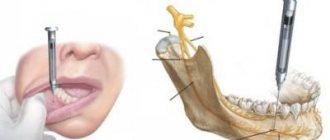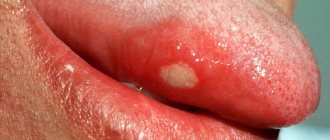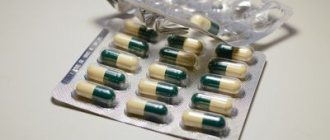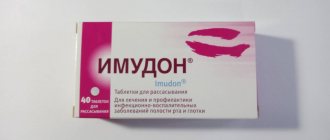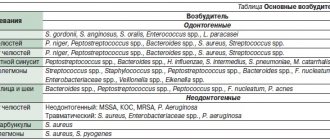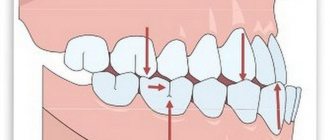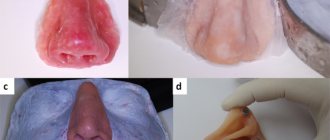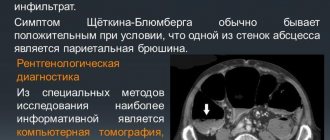Oral sanitation is a set of procedures aimed at cleansing the oral cavity of various bacteria. This is a mandatory step before implantation, since the main requirement for a complex operation is the sterility of the entire oral cavity. In addition, during the rehabilitation, teeth whitening will be performed, which is also very important for creating a new and beautiful smile.
Sanitation of the oral cavity: preparation for implantation
- treatment of teeth and gums
- removal of tartar and plaque
- treatment of teeth with a fluoride-containing preparation
- teeth whitening
Treatment of teeth and gums
Treatment of teeth and gums is a mandatory procedure at the stage of preparation for implantation. It is important to rid the oral cavity of bacteria that accumulate on the teeth and cause various diseases. After implantation, you will receive new and completely healthy teeth.
Removing tartar and plaque
Plaque is bacteria that accumulates on our teeth. Tartar is hardened plaque, it is much more difficult to remove from the surface of the teeth, and it causes significant damage to the enamel, gradually destroying the tooth and injuring the gums. Plaque removal is essential to restoring healthy teeth and gums.
Tartar: symptoms of appearance
- bad breath
- the formation of gum pockets (at the base of the teeth, the gums peel off from their surface, and plaque appears underneath them)
- bleeding gums
Tartar removal:
To remove tartar, the medical center uses modern ultrasonic equipment , which allows the hard plaque to be broken down into small particles, after which it is easily removed from the teeth. An ultrasonic installation allows you to remove even complex tartar, which is located under the gums, without pain and discomfort.
Treatment of teeth with a fluoride-containing preparation
After removing tartar and plaque, it is necessary to strengthen the tooth enamel - for this, fluoride-containing preparations are used, which are applied to the surface of the teeth for a certain time. They penetrate deep into the tooth, making it stronger and healthier.
Teeth whitening
The final stage in the process of sanitation of the oral cavity will seem to many patients the most pleasant - teeth whitening. In order to change the color of teeth by several shades, we use the Air Flow device - it also allows you to remove minor plaque, but its most effective use is justified in combination - after cleaning the teeth with ultrasound.
What is Air Flow?
Air Flow is a technology that allows you to change the color of your teeth by several shades and give them a more natural and natural look. Teeth cleaning is painless and safe: a stream of water is directed onto the teeth, to which an abrasive substance has been added. Strong pressure allows you to remove dirt, and a special substance significantly whitens teeth, mainly by removing various dirt from the surface.
It is also recommended to whiten your teeth to a natural shade so that after implantation, you can choose dental crowns that will serve as a natural complement to your snow-white living teeth.
Other jobs
How much treatment is possible in 1 visit?
The maximum duration of treatment under sedation is 14 consecutive hours
- Carry out comprehensive oral hygiene
- Cure caries, pulpitis or periodontitis
- Remove dental cysts
- Remove teeth, including wisdom teeth
- Fix the bracket system or aligners
- Install up to 16 implants
- Perform bone grafting on the lower jaw, sinus lift or revision of the maxillary sinus on the upper
- Install a comfortable and beautiful fixed prosthesis supported on your own teeth or on implants
How to treat all teeth in 1 day “in a dream”
Oral hygiene in dentistry: what is included in the procedure?
In general, oral hygiene in dentistry is a complex event, which includes several procedures at once. Let's consider all these procedures in detail.
Inspection
The patient comes to the dentist, to the doctor’s office, and the specialist conducts a thorough examination of the oral cavity, determining the indications for professional hygiene and eliminating possible restrictions on its implementation. Also during the inspection, a cleaning method is selected. There are several technologies for removing plaque, and we will also tell you about them in a separate section of the article.
Cleaning
To remove hard and soft plaque during dental and oral hygiene, different techniques can be used. Each of them has its own characteristics, pros and cons, which are best familiarized with in advance.
Mechanical cleaning
This method is rarely used in modern dentistry for dental and oral hygiene.
It involves the use of hand-held, outdated instruments that can easily injure the sensitive soft tissues of the oral cavity. The only and very relative advantage of mechanical cleaning is the low price of the service. Photos before and after:
Ultrasound technique
This technology for removing plaque is considered the most modern and safe.
In it, the doctor will use a special installation and instrument - an ultrasonic scaler. This device is capable of creating ultrasonic waves of controlled frequency that destroy not only soft and pigmented plaque on dental surfaces, but also hard tartar. Photos before and after:
Ultrasound is capable of removing plaque not only on dental surfaces, but also in the most inaccessible areas, including periodontal pockets. Such ultrasonic cleaning capabilities are especially in demand when carrying out dental and oral hygiene in patients with periodontitis and periodontal disease.
Air-abrasive technique Air Flow
With this type of teeth and oral cavity cleaning, a special device is used that delivers a powerful water-air jet saturated with small abrasive particles to the dental surfaces.
Air, water and fine abrasive ideally remove soft and pigmented plaque and cleanse the area of periodontal pockets. The Air Flow technique is one of the most modern technologies for dental and oral hygiene; it is painless, does not injure tooth enamel, and has a minimum of contraindications.
Photos before and after:
USEFUL TO KNOW: Most often, Air Flow and ultrasonic cleaning are used in combination, because the first technology perfectly copes with soft and pigmented plaque, but is practically useless against old tartar.
Another cleaning technology used in modern dentistry is the laser technique. It uses a directed laser beam, which not only destroys plaque, but also destroys all pathogenic microflora in the oral cavity. The laser cleaning procedure is safe, it does not harm tooth enamel, and does not cause increased sensitivity of teeth and gums. In addition, laser cleaning promotes accelerated healing of various microcracks and wounds present in the oral cavity.
What cleaning method will be used in your case? You will decide this issue together with your doctor, because each method of cleaning dental surfaces during dental and oral hygiene has not only indications, but also contraindications.
But cleaning dental surfaces is far from the final stage of professional dental and oral hygiene procedures. After removing plaque, you will need to carry out the stages of polishing and grinding the surface of the teeth and remineralizing the tooth enamel.
Polishing
Polishing of dental surfaces is a mandatory step in dental and oral hygiene in dentistry.
High-quality polishing of teeth gives them a beautiful shine and perfect smoothness, thanks to which plaque does not accumulate on the enamel. The polishing stage is carried out during dental and oral hygiene with a specialized instrument.
Remineralization
Remineralization is a procedure that represents the final stage of dental and oral hygiene.
During this stage, the specialist treats the surfaces of the patient’s teeth with preparations containing fluoride and calcium. This treatment prevents the occurrence of unpleasant hypersensitivity of teeth, acts as an excellent prevention of caries, and in addition helps to strengthen and restore tooth enamel. Oral and dental hygiene ends with a detailed consultation with a doctor. The dentist explains in detail to the patient what dental care should be like after the procedure, and assists in choosing products and tools for everyday dental hygiene.
Who chooses to have all their teeth treated “in their sleep”
For everyone who values their time and is accustomed to a certain quality of life, i.e. for everyone, although 10 years ago this format was of interest only to “big screen” stars and patients from other cities
- Super-busy Muscovites If you don’t have time to go to the dentist, like going to work, in traffic jams, in the evening, 2 times a week for six months to a year to get your teeth in order, and the problem is put off and put off for years
- Patients not from Moscow Every month we accept at least 10 patients from Russia and Europe. The operations are planned remotely; you only need to come for diagnostics and the operation itself. Very comfortably!
- Public people of all professions Privacy, quick results and the absence of visible signs of treatment on the face are why this technique has long been loved by show business stars, politicians, businessmen, and more recently bloggers
- Connoisseurs of comfort You can treat your teeth in the format of a SPA procedure. Fall asleep and wake up when it's all over. Not seeing or remembering the process. Do not hear medical odors and unpleasant sounds. Get the result and go home!
- Parents of responsible children If your parents are also the type who wouldn’t let a dentist near them at the drop of a hat, but walk around without teeth, then the only treatment format they can agree to is “all in 1 visit.” Checked!
- All those who do not like dentists Uncontrollable feelings of fear, panic reactions, negative experiences with a dentist in the past - all this is a direct indication for treatment in medicinal sleep
Stages of treatment
Below we have provided a sequence of standard activities for successful planning and treatment. Of course, some meetings can be combined into one visit, and in some cases vice versa. Please do not treat the listed stages literally, as imperative norms.
Initial consultation
The purpose of the initial consultation is to determine the overall treatment strategy.
- Identify patient complaints and wishes
- Determine the color and condition of tooth enamel
- Visually assess the condition of soft tissues (the gum is not visible on the CT image)
- Diagnose the functionality of the joint
- Carry out a photo protocol for further work on the smile design, taking into account facial features
The standard duration of the initial consultation at the Center is 60 minutes, which can be increased at the patient’s request. It is enough to inform the operator about this by phone when making an appointment.
In accordance with the Center’s Unified Quality Standards, initial consultations are carried out only if there is a high-quality 3D X-ray computed tomography image. If you already have a photo on CD or DVD that is no older than 8 weeks, take it with you. If you don’t have a photo, you can take one with us before your consultation.
If you do not live in Moscow, but are considering our Center as your future medical institution, please send a CT scan to the clinic’s email. Our doctors do not make diagnoses or provide consultations remotely, but they will be able to draw up several preliminary treatment plans with approximate time frames.
Initial consultations at the Center are paid. We do not encourage “luring” patients with free consultations for the purpose of selling services. Our doctors are engaged in medicine, not business, so their time is paid. A patient who contacts us for the first time can be sure that he will receive an objective opinion.
Repeated consultation
The purpose of the repeat consultation is to determine treatment tactics. At our Center, several doctors always take part in planning. This takes some time. We always ask patients to treat this phenomenon with understanding. Below we will try to justify why time and medical collegiality are needed.
- Orthopedist As a rule, during complex treatment, the initial consultation is always carried out by an orthopedic dentist and, by default, becomes the responsible attending physician for the patient . The orthopedist determines which specialized specialists need to be involved to plan treatment.
- The endodontist determines the consistency of the patient's remaining teeth. This is perhaps the most important part of planning, because... Excessive hopes for the canals of preserved teeth can lead to breakdowns, complications and the need to redo something within a year. Often, in order to accurately assess the durability of a tooth, especially one previously treated in third-party medical institutions long ago, it is necessary to conduct additional diagnostics using a microscope.
- Dental and maxillofacial surgeon Evaluates the condition of bone tissue, gums and maxillary sinuses. Determines the degree of difficulty of tooth extraction, if necessary, positions implants, plans work with soft tissues.
- Orthodontist Comes to the rescue with malocclusion, problems with the temporomandibular joint and in cases where there are indications for straightening teeth, for example, in order to eliminate crowding.
- Periodontist In many cases, we recommend treatment only after complex periodontal therapy because inflammatory processes in the soft tissues can, firstly, lead to immediate postoperative complications, and secondly, affect the durability of treatment results. We strive to ensure that our treatment lasts the patient's entire life.
Coordination of treatment tactics with 3-4 different specialists has been a completely standard practice in our Center for many, many years. Doctors may not recognize you by sight, but they remember your CT scan very well.
Of course, if you just need to cure caries on 7-8 teeth under sedation, one consultation with a dentist-therapist and an acquaintance with our anesthesiologist-resuscitator is enough, and already at the second meeting you will leave the clinic with complete sanitation of the oral cavity.
Fundamental diagnostics
In order for new teeth to last a lifetime, all the individual characteristics of the patient must be taken into account. For this purpose, various targeted in-depth diagnostic examinations of the oral cavity are carried out.
- Radiography Based on a computed tomography image, the condition of the bone tissue and the condition of the maxillary sinuses are determined, the dislocation of the implants, their size, position, and the possibility of performing implantation simultaneously with removal or with bone grafting are planned.
- Taking silicone impressions and making diagnostic models Allows you to obtain a copy of the patient’s teeth, the minimum necessary measure for orthopedic and orthodontic treatment.
- Digital 3D scanning of the oral cavity A modern and more accurate alternative to silicone impressions and plaster models. Allows you to instantly obtain a digital model on a computer for transmission to a dental technician, planning orthodontic treatment and making designs for future teeth.
- High-precision examination using a facebow and articulator Establishes the true trajectory of the lower jaw. Due to tooth wear, prolonged absence, hypertonicity of the jaw muscles and many other reasons, the lower jaw “loses” anatomical landmarks. Prosthetics “by eye” in such cases leads not only to the fact that the expensive prosthesis will not last long, but also to the development in the near future of arthrosis, arthritis, headaches and difficulty opening or closing the mouth.
- Neuromuscular TENS diagnostics It is used in cases where the tone of the jaw muscles is so increased that it is impossible to establish a reliable trajectory of jaw movement. The first signs of hypertonicity are bruxism, headaches, sleep disturbances, and discomfort in the cervical spine. TENS therapy using microcurrent impulses relaxes muscles, relieves spasms and allows for diagnostics.
- Inspection of canals under a microscope Allows you to determine with 99% accuracy whether it will be possible to save it with periodontitis or a cyst or not, as well as how many years a previously treated tooth will last in a third-party medical institution.
- Anesthesiological history In some cases, before the operation, a personal meeting with the Center’s staff anesthesiologist is required to clarify the anamnesis.
Planning the operation
A CT scan, photographs, and the results of additional diagnostic studies are collected together and a detailed treatment plan or several plans are drawn up.
If several visits are expected, then each is planned separately, with the timing and amount of the patient’s costs for each stage. As part of the operating day, the sequence of participation of each doctor is approved, and the required amount of time is recorded in the schedule.
The orthopedic dentist, using a special program, models the design of the future smile, produces a digital wax-up and coordinates the color and shape of the teeth with the patient before treatment begins. If necessary, a mock-up is made, a model of future teeth for fitting in the oral cavity, with which you can take a photo, show it to your spouse, leave the clinic and make a decision in a relaxed atmosphere.
The terms, cost of treatment, treatment procedure and warranty obligations for each of the treatment options, if there are several, are approved.
Operation
Complex treatment is carried out under sedation, a state of artificial medicinal sleep.
Sedation is not anesthesia; narcotics are not used, only ultra-short-acting hypnotics, such as propofol and diprivan. “Coming out” of sedation takes from 10 to 30 minutes and you can go home. Unlike anesthesia, breathing is not suppressed, there is no nausea, dizziness, and there is no need to stay in the hospital after the operation.
- We recommend planning the start of treatment in the morning.
- Restrictions: do not drink water 2 hours before operations under sedation, do not eat food 4 hours before.
- The clinic has a recovery room where you can rest when the doctors are finished.
- There is no need to run to pharmacies after treatment. All necessary medications and care products are provided within the Center.
Branded accelerated rehabilitation
The Center uses a unique proprietary rehabilitation complex to eliminate signs of surgical treatment. A course of 30-40 minutes completely eliminates swelling, hematomas and significantly reduces postoperative pain. The course uses microcurrent and injection therapy, which gives an immediate effect.
Indications and contraindications for professional oral hygiene in dentistry
Like any other medical procedure, dental and oral hygiene has its own indications and contraindications. Indications include:
- The presence of soft or hard plaque on the dental surfaces;
- Inflammatory process affecting the gums;
- Presence of tartar;
- Prevention of the development of caries and other dental diseases;
- Enamel pigmentation as a result of smoking, frequent consumption of tea and coffee.
USEFUL TO KNOW: The dental hygiene procedure also helps to brighten them. After all the activities, the teeth brighten by about one to two shades. This is already a good result, but if you need perfect whiteness, then it is better to use an additional service of modern dentistry after hygiene - professional whitening!
Professional dental and oral hygiene must be performed before prosthetics, implantation, orthodontic treatment using braces, installation of veneers and lumineers.
Also, the professional hygiene procedure can be part of complex therapy in the treatment of diseases such as periodontitis and periodontal disease. It is also recommended for expectant mothers to undergo professional cleaning of their teeth and oral cavity in dentistry: during pregnancy, the risks of caries increase significantly and high-quality oral hygiene will be an excellent prevention of this disease!
However, in some cases it is impossible to maintain oral and dental hygiene. For example, with stomatitis, general infectious diseases of the body in acute form. First, it will be necessary to eliminate these diseases and only then will it be possible to undergo the procedure.
Professional oral hygiene is not recommended in case of severe thinning of the enamel or erosion of the enamel coating of the teeth. Under such circumstances, the procedure can do more harm than good!
Indications and contraindications for professional dental and oral hygiene are determined at a dental appointment: the doctor will conduct an examination and tell you whether in your case it is possible to undergo the procedure immediately or whether preliminary measures will be needed that will improve the quality of hygiene and make it as safe as possible for you!
PiezoSurgery® – ultrasound surgery
We work with bone tissue and remove teeth using a minimally invasive piezosurgical protocol
- Minimal trauma - the bone is not damaged, it is delicately softened
- The device affects only hard tissues, damage to the sinus membrane is excluded during sinus lifting
Cost of treatment
A special feature of the estimate for dental treatment for 1 day is the absence of stages of payment and the inclusion of the cost of several hours of sedation. Otherwise, the assessment procedure is no different from the traditional procedure. At the initial consultation, the doctor collects anamnesis, assesses the general condition of the oral cavity and joints, analyzes a computed tomography scan and makes a diagnosis. At this stage, the approximate order of expenses can always be determined. For a more accurate assessment, the opinion of related specialists will be required.
In 90% of cases, patients seek help under the “one visit” program with complex problems, so the cost is summed up from therapeutic, surgical, and orthopedic work.
Sign up for a paid consultation with the leading specialists of the Center or with the Chief Physician Dmitry Valerievich Levin and get an unbiased opinion about the treatment specifically in your case.
Sanitation of the oral cavity and its feasibility
Looking at the pages of glossy magazines, we never cease to admire the beauty and charm of famous people, actors, and top models. A smile plays an important role in the beauty and attractiveness of the face - large, snow-white, healthy teeth! We all admire them and want our teeth to be close to ideal too.
When a dentist sees such a smile, he immediately understands that a lot has been invested in it - money, the work of more than one doctor, but most importantly - the patience and understanding of the patient, because ideal, snow-white, straight teeth cannot be achieved in one day.
Let's consider two options for achieving the goal. The option is almost close to a dream - a person has naturally light-colored, beautifully shaped teeth and, it seems, he just has to learn how to show them off to others correctly.
The second option is not so favorable - the teeth are not straight, the color is disappointing, some had to be removed, and so on - you can safely forget about showing them to others. The owner of good and not very good teeth (options 1 and 2) faces completely different tasks! In the first case, preserve what nature has given, in the second, restore, improve, change what is available.
And oddly enough, in both cases patients will need: oral sanitation. Explaining what it is is the purpose of our article.
Oral sanitation is a set of measures aimed at improving the health of the oral cavity and preventing dental diseases. Sanitation of the oral cavity should be carried out throughout life, starting from childhood. Sanitation of the oral cavity includes the treatment of dental caries and the elimination of dental tissue defects by filling, the removal of decayed teeth and roots that cannot be treated, the removal of tartar and the treatment of periodontal diseases, orthodontic (correction of the bite position of the teeth) and orthopedic (restoration of the dentition) treatment.
This definition looks scary at first glance, but the most important thing here is to understand that the sooner you start paying due attention to your teeth, the shorter the list of measures to eliminate problems will be.
Patients who have experience in dental treatment at the ImplaDent dental clinic have already experienced the benefits of complex treatment from their own experience. The treatment regimen may look like this: when the patient first contacts the doctor, he examines the oral cavity and identifies problems that may exist: holes in the teeth, defects in fillings, the presence of plaque and tartar, the degree of inflammation of the gums, roots and decayed teeth. The doctor explains all this to the patient and draws up a treatment plan. If the mouth is neglected, treatment begins, as a rule, with the removal of decayed teeth and healing of the gums - this is done so that when restoring the preserved teeth, the conditions for aesthetic treatment are close to ideal. This helps the doctor choose the right color for fillings and metal-ceramic crowns and avoid defects in the marginal fit, which happens with bleeding, inflamed gums.
If the patient’s oral condition does not require such radical measures, the doctor explains to the patient the principles of oral hygiene, helps the patient choose the right toothbrush and toothpaste, and begins treatment of caries and dental restoration.
Next, it is important to understand that after undergoing a complete sanitation of the oral cavity, spending your patience, personal time and, of course, money, you must not forget about regular preventive examinations once a year or once every six months. Such examinations help to identify emerging problems in the early stages, because no doctor can guarantee you that in a tooth that has already been treated, caries will not appear again on another surface of the enamel, or that tartar will never form again if it has been removed once. I would like to summarize what has been said - every person who has once tidied up his mouth is familiar with the concept of oral sanitation , and believe me, if it was carried out correctly, he appreciated the actions of the doctors and the result obtained. The doctors of the ImplaDent dental clinic will always be able to explain to you the need for certain measures to improve the health of the oral cavity, draw up a treatment plan and professionally perform any procedure related to the treatment of teeth or gums, extraction or prosthetics.
Come, we can and want to help you!
